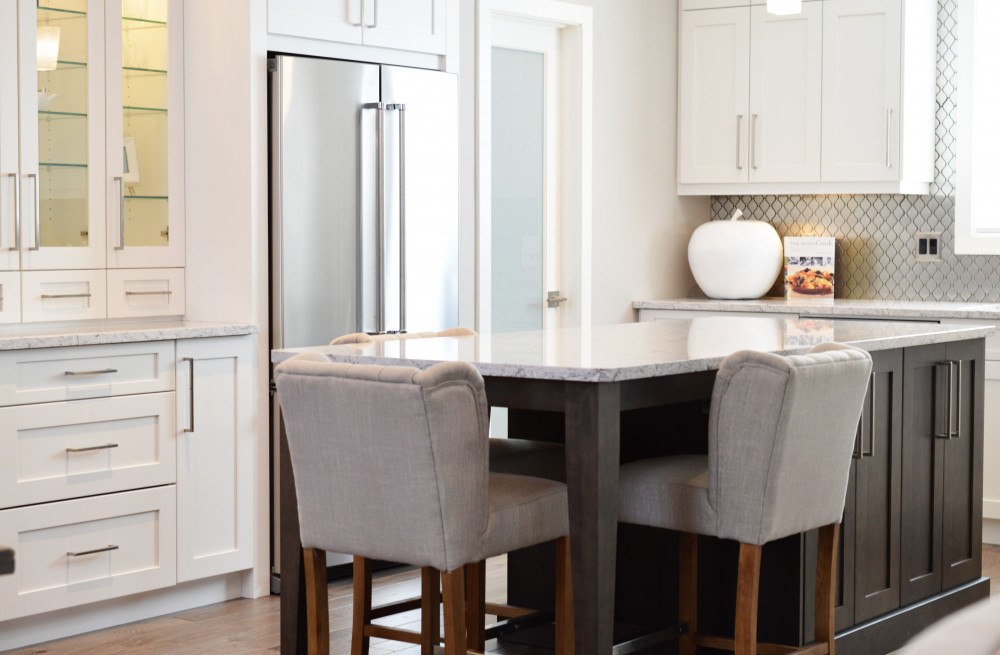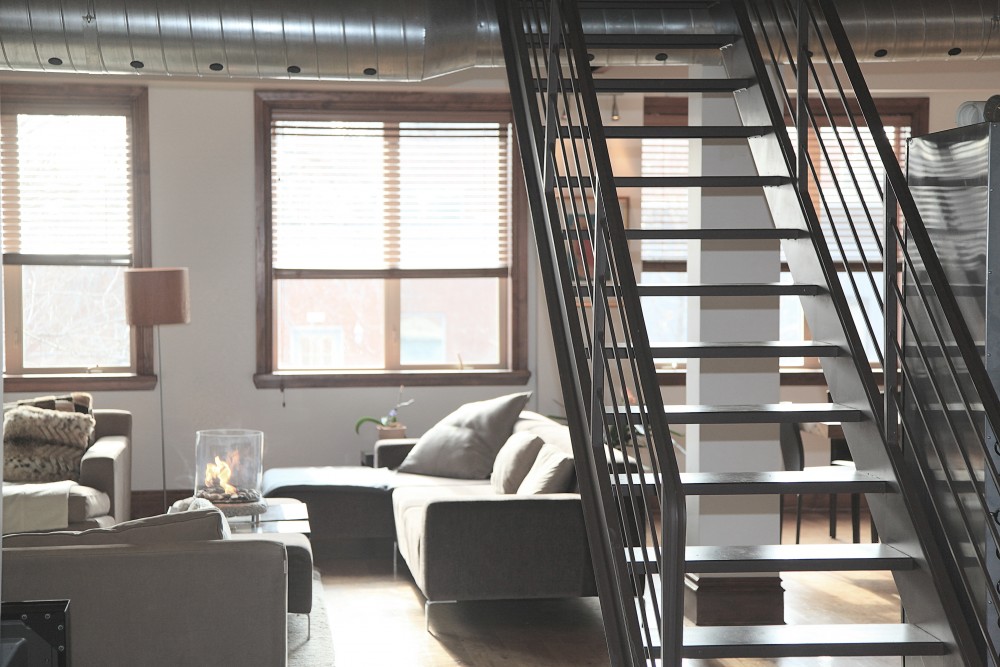The Remodel Handbook
A step-by-step guide to tackling a home remodel without losing your mind
Home remodeling projects can be a huge undertaking, but they don’t have to be headache-inducing. With a little planning and the right team, your next remodel could be as smooth as a granite countertop. This step-by-step guide will help you complete your project on time, under budget and with your sanity in tact.
Step 1. Prioritize, Pinterest, Plan
The first phase of a successful remodel is all about the three P’s: prioritization, Pinterest and planning. “First thing to do is prioritize the pain points in your house, the things that bother you,” says Paul Welhouse, owner of Welhouse Construction in Kaukauna. “Why live with certain things you can fix?”
Outdated master bathroom? Inefficient kitchen layout? Whatever about your home that causes you to cringe, add it to the list.
Next comes the dreaming and scheming phase. Envision what your new space could look like and how it will function. Gary Fassbender, owner of Distinctive Renovations in Appleton, recommends visiting discovery sites like Pinterest and Houzz for inspiration or, better yet, working with an interior designer.
“It’s not uncommon for people to know what they dislike, but have no vision for what they want,” Fassbender says. “In those cases, it’s so helpful for them to work with someone who can help walk them through the design process.”
Try to pinpoint as many of the details as early in the process as possible. Visualize the entire project and all the elements in it, from faucets and fixtures to flooring. If this sounds like a lot of work, it is. But Fassbender says the alternatives – procrastinating and avoiding – only create problems down the road.
“You can eliminate so much stress and control the budget by doing good homework up front,” Fassbender says.
Step 2. Determine the budget
There are many factors that impact remodeling costs, and homeowners need to enter with realistic expectations. Consider the scope of your project to get the best idea of what it will cost. Projects that require structural changes or plumbing and electrical work can cost more than ones that don’t.
Once you have an idea of what to accomplish, figure out what you can realistically afford. Welhouse says to best determine the budget, first have a serious conversation about how long you plan to remain in the home.
“Remodeling is an investment in your home,” he says. “You want to enjoy it at least three to five years minimum.”

Any fewer than that, Welhouse recommends a facelift to increase resale value rather than a full-blown remodel.
Fassbender recommends attending neighborhood open houses and comparing asking prices to get an idea of what the local housing market can support.
“If you haven’t built a lot of equity yet, you want to be prudent in how you spend money on a remodel,” he says. “You want to be realistic so when you sell the house you won’t take a beating on what you invested into it.”
Step 3: Consider financing options
Erika Arnoldussen, branch manager at Unison Credit Union in Little Chute, frequently works with homeowners who wish to secure a loan for their home project.
“I like [members] to tell me what is a good payment for them,” she says. “Then it’s a balance between what the lender approves them for and what they realistically want to pay per month.”
Arnoldussen says Unison offers an unsecured loan that works for many homeowners. “The U Choose loan is better for smaller projects. I suggest $10,000 or less,” she says. “It’s quick and within an hour you can be walking out with a check.”
Other options exist to help cover unexpected expenses that arise during the project.
“The Kwik Cash line of credit has a $10,000 limit and you can pull off what you need and only pay interest on what you use,” Arnoldussen says.
Step 4. Hire a contractor
It’s important to hire a contractor who meets both your vision and budget. To find your perfect match, look at contractors’ websites for examples of previous work and ask for references from ones who catch your eye. Referral business is huge in the home industry, so ask for recommendations from friends and family who have completed projects you admire.
Welhouse recommends seeking quotes from two or three contractors at most.
“There are way more decisions than a lot of people think, so don’t get five or six contractors in there. [Homeowners] will be overwhelmed already,” he says. “Pick a couple you think could fit, otherwise it’s a mess.”
Fassbender stresses the importance of selecting a contractor whose communication style matches yours. Interview contractors in person to see if you work well together.
“If that rapport isn’t built in a couple of meetings, it probably won’t be a good fit during the process,” he says.
Step 5. Minimize inconveniences
Clear and frequent communication with your contractor is a surefire way to address ongoing issues and keep your remodel running smoothly. Fassbender recommends writing down questions and concerns, then communicating them with your contractor.
“Keep it organized to one communication a day,” he says. “It makes it easier for everybody and keeps it more productive.”
A little forethought can also help make the inconveniences of a remodel easier to navigate. For example, if you are remodeling a kitchen, Welhouse suggests adding dining-out expenses to the budget. Fassbender recommends setting up a makeshift kitchenette in a laundry room or anywhere with a sink nearby.
“Ahead of time you can freeze soups and lasagna and use a dorm-style microwave to prep things,” he says. “When we went through our kitchen remodel, we bought a single-burner induction cooktop so we could scramble an egg and steam vegetables.”
Step 6: Final inspection
When your remodel nears completion, it’s important to do a walk-through and create a punch list – a rundown of any final changes, repairs or adjustments. This is a necessary step to ensure you love your finished project. Consult the contract and double check that everything outlined has been completed. Test all appliances, plumbing and electrical outlets and ask about maintenance requirements.
It’s a good idea to do this as the remodel comes to a close, as opposed to throughout the process. For example, cabinet doors are usually leveled later in the project, so they can appear uneven at first.
“Don’t stress out over things that don’t always look quite right,” Fassbender says. “The big thing is you want a contractor who will make sure it’s right when it’s finished.”
A Remodel Timeline
How long it takes to complete a remodel varies by project and contractor. Locally, an upswing in new projects has created a backlog of work. “This has been one of the busiest years ever. People need to be mindful of timeframes being expanded due to volume of work,” Welhouse advises.
However, according to the National Association of the Remodeling Industry (NARI), the following is a general timeline for a typical kitchen remodel which can take three to four weeks:
• 1-2 days for demolition (remove existing fixtures, knock out walls, etc.)
• 2-3 days for framing
• 2-5 days for rough in of electric, plumbing and heat (mechanicals)
• 3-4 days to add new plasterboard and tape it
• 1-2 days to install floor
• 2-6 days to install cabinets
• 1-2 days to install fixtures and appliances
• 1 day to install sink, dishwasher, etc.
• 2-3 days for lighting, wall coverings, painting, etc.
Source: www.nari.org














Leave a Comment